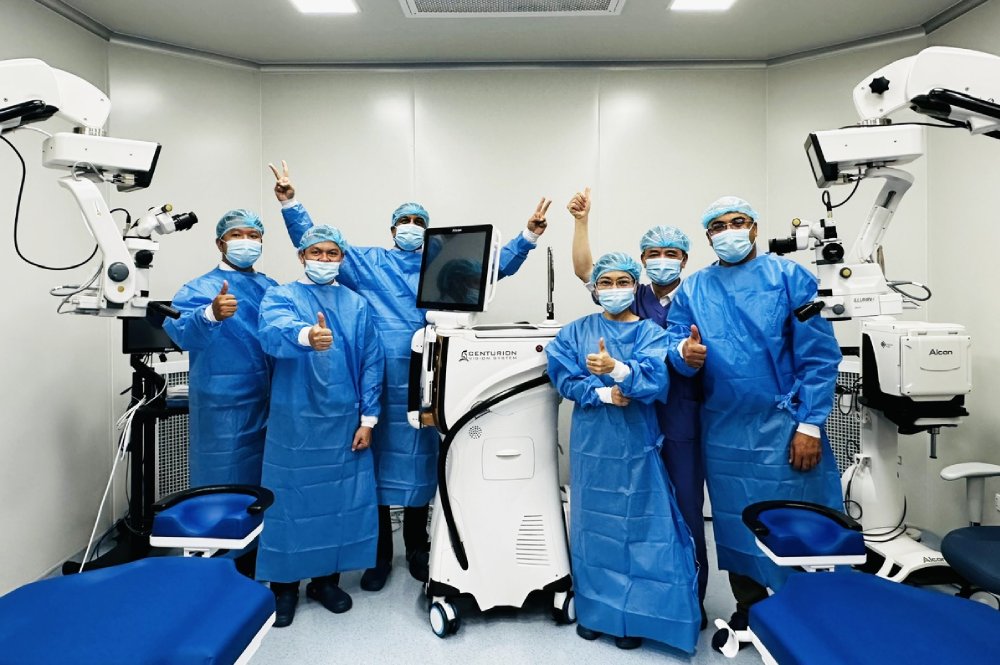A few weeks ago, I watched Live to 100: Secrets of the Blue Zones on Netflix. The documentary explores pockets of the world where people live the longest and healthiest lives. I was particularly struck by a scene in Okinawa, Japan, where centenarians effortlessly maintained their physical well-being and mental sharpness.
It got me thinking: longevity alone isn't enough. The real question is, how can we ensure that longer lives are also healthier lives?
As a healthcare industry veteran with two decades of experience in Asia Pacific, I've seen first-hand how technological innovations can transform patient care. But with these advancements comes a critical responsibility: ensuring patient safety at every step.
Living Longer, Living Better
Aligned with the World Patient Safety Day (WPSD) on 17 September, this year's theme, "Improving Diagnosis for Patient Safety", really hits home. The WPSD slogan, "Get it right, make it safe!", is a timely reminder that as we embrace more home-based and telemedicine solutions, safety and accuracy are becoming even more critical.
The COVID-19 pandemic exposed significant gaps in healthcare, straining hospitals and burning out care workers. It made the need for flexible, patient-centered care models, such as telemedicine and home-based care, more urgent.
In Singapore, where we're approaching "super-aged" status by 2026, the stakes are even higher. The question is no longer about living longer, but about living better—what we call healthspan. Ensuring these extra years are lived with vitality and good health is becoming a more urgent priority.
In response, Singapore introduced Healthier SG in July 2023, shifting the focus from "sick care" to "health care". This nationwide initiative encourages individuals to take charge of their health through strong relationships with primary care providers. This aligns perfectly with WPSD's goals, fostering early interventions and a more personalized, preventive approach to healthcare.
Evolving Towards Outcomes-Based Care
With initiatives like Healthier SG focusing on preventive care, Singapore has also made significant strides in shifting from a volume-based healthcare model to one focused on outcomes. This transformation has fundamentally changed how healthcare is delivered, and I've witnessed the positive impact it's having on patients.
One of the most innovative aspects of this transformation is the Mobile Inpatient Care-at-Home (MIC@Home) pilot program, launched in 2022. It offers hospital-level care in the comfort of patients' homes, moving us toward a "hospital without walls". This approach doesn't just reduce hospital strain—it also provides patients with a more dignified, personalized care that emphasizes their independence.
That said, this transition is not without its challenges. Ensuring proper diagnoses, maintaining data security, and preventing the misuse of medical certificates are key concerns that must be addressed as we adopt telemedicine and home-based care solutions.
Healthtech, the New Backbone of Patient Safety
Healthtech is increasingly stepping up to meet these concerns. In my conversations with industry leaders, one thing is clear: Healthtech is no longer just an add-on—it's becoming the backbone of patient safety. Even more so as we navigate an aging population post-pandemic. The numbers speak for themselves. The Asia-Pacific healthtech market is set to exceed USD 153 billion by 2030, growing at 20.2 percent annually from 2024 to 2030—proof that innovative care solutions are becoming indispensable.
Singapore exemplifies this shift. Artificial intelligence (AI)-driven diagnostics, remote monitoring systems, and even "pharmacy ATMs" that dispense prescription medication are reshaping care delivery. For instance, Synapxe (formerly IHIS), Singapore's healthtech agency, uses AI to detect early signs of chronic diseases, allowing for timely interventions. Meanwhile, AI-driven platforms like Augmented Video Analytics for Medication Adherence (AV-MED) help patients adhere to medication regimens, improving safety in home-based care.
Yet, as exciting as these advancements are, we must remain vigilant. AI can enhance safety and outcomes but misdiagnoses due to data gaps or system errors remain a risk. Ensuring these tools are reliable and focused on patient safety is crucial.
That said, technology alone is not enough. In my experience, empathy, trust, and human-centered care are what make healthcare effective. AI may improve safety, but human connection ensures patients feel truly cared for.
Tackling Chronic Diseases and Vaccine Hesitancy
One area where healthtech has had a profound impact is in the management of chronic diseases. Dementia, for example, is expected to affect 152,000 people in Singapore by 2030. Managing these requires not only medical expertise but also a holistic approach that prioritizes patient safety.
At DKSH, we’ve integrated technology into our supply chains to address this challenge. Our Brilliant Box (B-box), a temperature-controlled cold chain solution, ensures the safe delivery of critical medical products, particularly in remote areas. But technology alone isn't enough collaboration between healthcare providers, caregivers, and patients is crucial to ensuring patient safety.
During the COVID-19 pandemic, this collaboration proved especially crucial when vaccine hesitancy became a pressing issue across Asia Pacific. Misinformation and fear deterred many from getting vaccinated. To counter this, we worked closely with partners to launch targeted education campaigns, sharing clinical trial data and real-world results. This approach not only boosted vaccination rates but reinforced the importance of building patient trust in healthcare systems.
These experiences reinforced a key lesson for me: patient safety isn't just about administering the right treatment—it's about ensuring that patients feel informed, empowered, and confident in their healthcare. Whether it's educating patients about new treatments or ensuring continuity of care for chronic conditions, our goal remains the same—empowering patients to make informed decisions about their health.
Best Practices for Healthcare Organizations
From my experience, here are key practices that can help organizations integrate patient safety into their healthcare operations:
- Embed safety protocols into every stage of technology implementation. This ranges from AI accuracy to data security
- Foster a culture of continuous learning. Regular training on emerging technologies and updated safety measures is essential for maintaining the highest standards of care
- Encourage collaborative partnerships. Prioritize open communication, feedback loops, and shared responsibilities to make patient safety a shared commitment across teams
- Prioritize data security and compliance. As healthcare becomes more digitized, protecting patient data is critical not only to maintain trust but also to meet regulatory requirements
Strengthening Patient Safety in a New Era
Reflecting on Live to 100, I'm reminded that longevity is only part of the equation. The real goal is to ensure those extra years are lived with vitality, purpose, and safety.
As healthcare evolves, the challenge is clear: we must prioritize patient safety in every innovation, ensuring healthcare not only adds years to life but also life to those years.









